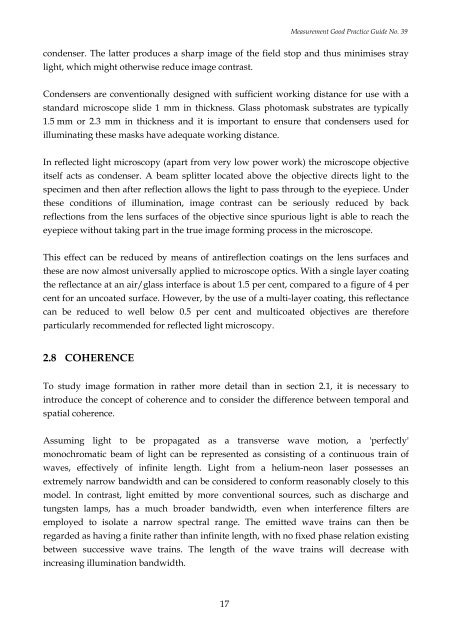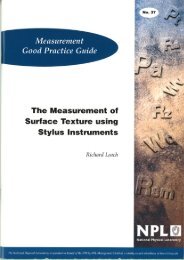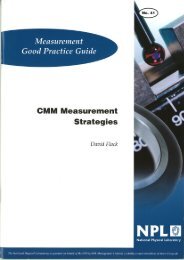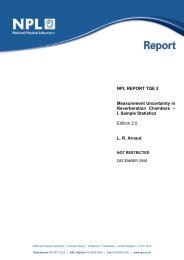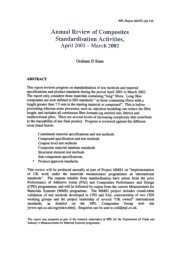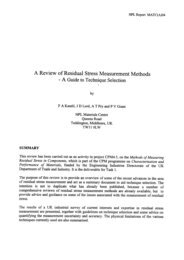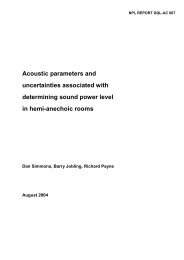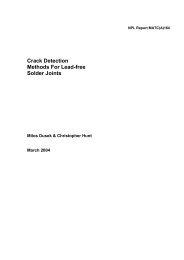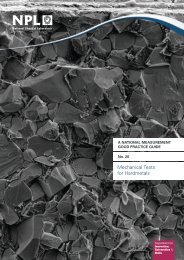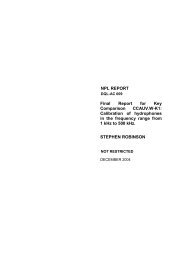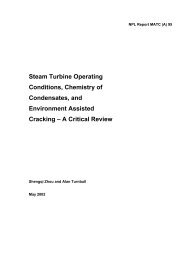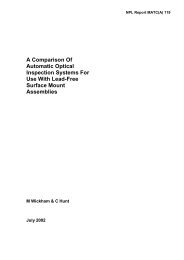Dimensional Measurement using Vision Systems - NPL Publications ...
Dimensional Measurement using Vision Systems - NPL Publications ...
Dimensional Measurement using Vision Systems - NPL Publications ...
Create successful ePaper yourself
Turn your PDF publications into a flip-book with our unique Google optimized e-Paper software.
<strong>Measurement</strong> Good Practice Guide No. 39<br />
condenser. The latter produces a sharp image of the field stop and thus minimises stray<br />
light, which might otherwise reduce image contrast.<br />
Condensers are conventionally designed with sufficient working distance for use with a<br />
standard microscope slide 1 mm in thickness. Glass photomask substrates are typically<br />
1.5 mm or 2.3 mm in thickness and it is important to ensure that condensers used for<br />
illuminating these masks have adequate working distance.<br />
In reflected light microscopy (apart from very low power work) the microscope objective<br />
itself acts as condenser. A beam splitter located above the objective directs light to the<br />
specimen and then after reflection allows the light to pass through to the eyepiece. Under<br />
these conditions of illumination, image contrast can be seriously reduced by back<br />
reflections from the lens surfaces of the objective since spurious light is able to reach the<br />
eyepiece without taking part in the true image forming process in the microscope.<br />
This effect can be reduced by means of antireflection coatings on the lens surfaces and<br />
these are now almost universally applied to microscope optics. With a single layer coating<br />
the reflectance at an air/glass interface is about 1.5 per cent, compared to a figure of 4 per<br />
cent for an uncoated surface. However, by the use of a multi-layer coating, this reflectance<br />
can be reduced to well below 0.5 per cent and multicoated objectives are therefore<br />
particularly recommended for reflected light microscopy.<br />
2.8 COHERENCE<br />
To study image formation in rather more detail than in section 2.1, it is necessary to<br />
introduce the concept of coherence and to consider the difference between temporal and<br />
spatial coherence.<br />
Assuming light to be propagated as a transverse wave motion, a 'perfectly'<br />
monochromatic beam of light can be represented as consisting of a continuous train of<br />
waves, effectively of infinite length. Light from a helium-neon laser possesses an<br />
extremely narrow bandwidth and can be considered to conform reasonably closely to this<br />
model. In contrast, light emitted by more conventional sources, such as discharge and<br />
tungsten lamps, has a much broader bandwidth, even when interference filters are<br />
employed to isolate a narrow spectral range. The emitted wave trains can then be<br />
regarded as having a finite rather than infinite length, with no fixed phase relation existing<br />
between successive wave trains. The length of the wave trains will decrease with<br />
increasing illumination bandwidth.<br />
17


